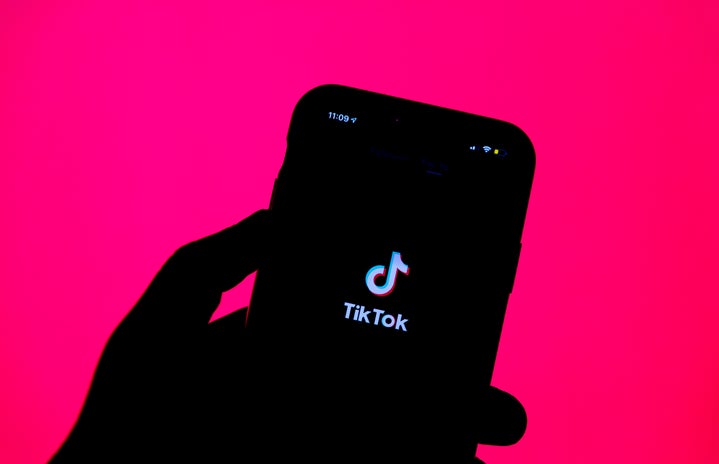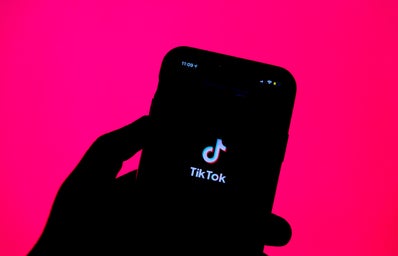Feathered brows, defined lashes, flyaways and baby hairs smoothed down with brow gel…pearlescent highlighter tapped in with fingers on the cheekbone, cream blush daubed across the bridge of the nose…earth-toned outfits finished with chunky gold hoops, layered chains, and a spritz of a Maison Margiela fragrance. We’ve all seen that look on our FYP.
For Gen Z beauty enthusiasts, “clean” isn’t just a matter of hygiene. It’s an aesthetic, a lifestyle, and a personal brand. Compounded by the popularity of the flawless composure of “That Girl” or the effortless stylishness of the “model-off-duty” aesthetic, #clean are a powerful branding tool with a strong draw and surprisingly unified cultural understanding.
When it comes to describing the #cleanlook that’s sweeping TikTok at 10.9M views and counting (with another 2.1M views under #cleanmakeuplook), listing what “clean” entails is one thing. However, considering who “clean” excludes is another.
There’s an undeniably racial overtone to the beauty standard the #cleanlook uplifts and celebrates. Though the light sculpting of the clean look – bronzer strategically and minimally applied to accentuate slender nose bridges and high cheekbones – is definitely best-suited for Eurocentric beauty standards of bone structure. The #cleanlook‘s attitude towards hair is its most exclusionary. For the #cleanlook, “neat” hair appears to be synonymous with sleek, pin-straight hair. With the exception of a few tutorials specifically created for and by BIPOC, there is a jarring lack of creators with curly, textured or natural hair under the #cleanmakeuplook hashtag. The top videos, generating the greatest amount of views and likes, as well as amplified by the algorithm to reach the greatest audience, all feature women with straight, “slick” hair. With workplace discrimination against natural hair in professional spheres already so commonplace, TikTok’s partiality is as unsurprising as it is frustrating.
Size is another disappointing but predictable arena for discrimination in the #cleanlook. Seeing the dramatic difference between how the same outfit can be received on differently-sized bodies – the same monochrome set that earned glowing praise on a thin body being met with snarky comments on a larger body – you wouldn’t be mistaken to believe that a flat stomach is as essential to clinching the “look” as the clothes themselves.
Finally, the considerable cost of obtaining the #cleanlook presents a financial barrier. Though the #cleanlook’s pared-down aesthetic may appear to be more accessible than the maximalism of 2016 Instagram beauty guru “Insta-glam” trends, minimal aesthetics don’t necessarily translate to minimal cost…or even minimal products.

The Insta-glam look’s train-cases of foundations, concealers and primers have been replaced by the #cleanlook‘s shelves of serums, actives and moisturizers. Influencers flex vanities stocked with expensive skincare products and high-tech skincare tools like trophy cases. Perfect skin is still demanded, except this time you’re expected to wake up with clear and glowing skin, unassisted by any cosmetic with greater coverage than a tinted SPF. The added pressure of #cleanlook’s natural and effortless perfection makes it even more inaccessible than the Insta-glam look’s meticulously constructed glamour. While Insta-glam required you to have the technical skill and cosmetics to cover up any imperfections, the #cleanlook demands you have the uncontrollable blessing of genetics (or the bank account for cosmetic dermatologists and medspas) to not have any imperfections, to begin with. For the 99.9% of us with acne, texture, and sunspots, that’s an unattainable feat.
The #cleanlook’s emphasis on prestige products rivals and even transcends Insta-glam’s focus on luxury brands. It’s definitely a far cry from the DIY and drugstore-championing scene of early beauty YouTube with creators like Michelle Phan and Bethany Mota. However, while the dramatic cut creases, glitter eye looks, and opaque lips of Insta-glam necessitated pigments and formulas more common in high-end brands, the sheer finishes and neutral tones of the #cleanlook don’t share the same formulation demands. Still, popular creators push the most expensive products. Though the plush doe-foot applicator and weighty mirrored packaging of a Dior lip oil may feel more luxe than a tube of Chapstick, when they both give the same hydrating red tint of colour, it’s easy to feel like you’re chasing a lifestyle more than an outcome or effect.
The high cost of the #cleanlook extends to its accessories as well. Though the classic style of the #cleanlook’s gold jewelry may make these hoops and chains seem like a worthier investment than more short-lived trend pieces, their fine materials come at a (high) price. Duping costume jewelry trends can come with certain flexibility of personal style and personal budgeting. Duping fine jewelry? A tough task and it goes without saying that the pristine #cleanlook shuns the rapid tarnish and skin-greening of more inexpensive replicas.
Despite its stylized effortlessness, the #cleanlook is shaping up to be the sun-bronzed and Glossier You-perfumed younger sister of past exclusionary trends that require a hefty investment of time and money, from the conspicuous consumerism of hypebeast streetwear to the moneyed uniform of preppy looks.



